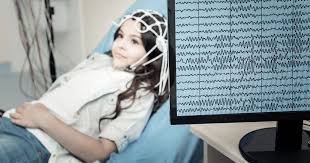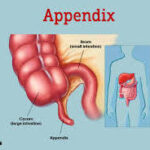Understanding Lennox-Gastaut Syndrome (LGS): Causes, Symptoms, and Management

Lennox-Gastaut Syndrome (LGS) is a rare and severe form of childhood epilepsy that typically develops between the ages of 3 and 5 years. It is characterized by multiple types of seizures, cognitive impairment, and an abnormal electroencephalogram (EEG) pattern. LGS is considered a catastrophic epileptic encephalopathy because it significantly impacts a child’s development and quality of life.
Causes:
LGS can result from a variety of underlying conditions. It may be associated with brain malformations, genetic mutations, infections such as meningitis or encephalitis, brain injuries, or other neurological disorders like tuberous sclerosis. In some cases, the cause remains unknown (idiopathic). The syndrome is not contagious or inherited in most cases, but genetic factors can play a role.
“Beat the Pressure: A Comprehensive Guide to Lowering Blood Pressure Naturally.”
Buy book from Gumroad or Paystack
Symptoms:
The hallmark of LGS is the presence of multiple seizure types, including:
- Tonic seizures: sudden stiffening of muscles, often during sleep.
- Atypical absence seizures: brief lapses in awareness.
- Atonic seizures: sudden loss of muscle tone leading to falls (drop attacks).
- Myoclonic seizures: brief, shock-like jerks of muscles.
Children with LGS often experience developmental delays or regression, behavioral problems, and learning difficulties. The seizures are typically resistant to standard anti-epileptic medications, making management challenging.
Diagnosis:
Diagnosis involves a combination of clinical evaluation, EEG testing, and neuroimaging. The EEG in LGS shows a distinctive slow spike-and-wave pattern during wakefulness and generalized paroxysmal fast activity during sleep. MRI scans may reveal structural brain abnormalities.
Treatment:
There is no cure for LGS, but various treatments aim to reduce seizure frequency and improve quality of life. Treatment options include:
- Medications: Anti-epileptic drugs such as valproate, lamotrigine, topiramate, and rufinamide are commonly used.
- Dietary therapy: The ketogenic diet, a high-fat, low-carbohydrate diet, can help control seizures in some children.
- Vagus nerve stimulation (VNS): A device implanted to stimulate the vagus nerve can reduce seizure frequency.
- Surgery: In selected cases, epilepsy surgery may be considered.
- Supportive therapies: Physical, occupational, and speech therapies are vital for managing developmental delays and improving daily functioning.
Prognosis:
The prognosis for children with LGS varies but is generally guarded due to the severity of seizures and associated cognitive impairments. Early diagnosis and a multidisciplinary approach to treatment can help manage symptoms and improve outcomes.
Research and Future Directions:
Ongoing research aims to better understand the genetic and molecular basis of LGS to develop targeted therapies. Advances in neuroimaging and genetics hold promise for improved diagnosis and personalized treatment strategies.
In summary, Lennox-Gastaut Syndrome is a complex epilepsy syndrome requiring comprehensive medical and supportive care to manage seizures and associated developmental challenges. Awareness and early intervention are crucial to optimizing the quality of life for affected children and their families.
💔 “She said she loved me. And for fifty-two years, I believed her.” 💔
Buy The Book "The Longest Lie: A Husband’s Journey Through Love, Betrayal, and Redemption" From Gumroad






